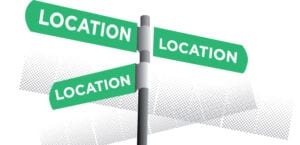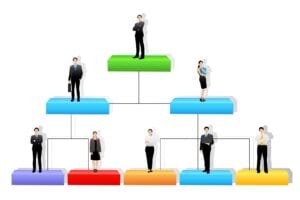So, you’re setting up a new contact Centre…..
In this article we look at some of the key considerations for someone who wants to set up a contact centre, you might be growing in numbers and now is the time to embrace new technology and develop your contact strategy or you might be setting up from scratch.
Here are some things to consider as you go about it….
What is the purpose or function of your contact centre?
Firstly, you need to decide what type of contact centre you want to be, i.e. are you primarily inbound or will you be making more proactive outbound calls?
Most new contact centres will be generating their own demand to start with so you may be primarily outbound with more inbound starting to grow with the marketing and call backs that you start with.
You have two things to consider: –
1. Do you want to use outbound dialler technology to help you do your dialing and
2. How much resource do you need to start to dial out and handle any inbound enquiries?
 Calculating the number of employees needed very much depends on the type of contact centre that you want to be, but you can start to think about forecasting your inbound demand based on the success you think you might have from your marketing – typically response rates vary but anywhere between 0.5 -1% is usually considered a good response to direct mail and your website traffic will determine your inbound call ratio also. If you have an existing base of customers and it’s a more service driven center you may also want to consider what external communication you are send and what your existing traffic has been and any expected uplift when you start to promote your contact number in key places.
Calculating the number of employees needed very much depends on the type of contact centre that you want to be, but you can start to think about forecasting your inbound demand based on the success you think you might have from your marketing – typically response rates vary but anywhere between 0.5 -1% is usually considered a good response to direct mail and your website traffic will determine your inbound call ratio also. If you have an existing base of customers and it’s a more service driven center you may also want to consider what external communication you are send and what your existing traffic has been and any expected uplift when you start to promote your contact number in key places.
If you are starting from scratch then you may want to think about what outbound communication you want to do and whether an outbound dialler may be useful to help you get greater levels of productivity for your dialing. Selecting a Contact centre cloud platform that has an inbuilt predictive or progressive dialler function will help you flexibly change your dialing patterns if your inbound response increases.
Other considerations should also be given to your office space or location strategy, do you want your people to work on site or are you comfortable remote working as this will inform your technology plans and associated costs for premises and technology costs. we cover more of this as you read through this article
Service levels
How efficient do you want your contact centre to be when handling inbound enquiries can inform the staffing levels that you need, you can create forecasting models for staff which will help create a service level calculation, but you will also need to factor in based on the purpose of your contact centre any associated Shrinkage eg time that your people aren’t available to handle inbound calls either through, sickness, absence, admin, outbound activity, breaks or lunches etc.
Understanding how many calls you expect to receive is a tricky one and this will depend on how much marketing you plan to do and the response to that, it will also depend on how much proactive outbound you want to do as often outbound calls will trigger an inbound response so really considering your marketing plan and your contact strategy is important to anticipate call demand.
Location Strategy
Dependent on the location strategy and your designs for office or home working you will want to consider how easily you can scale your team should demand quickly increase. This means choosing a telephony provider that can help you scale quickly should the need arise, you also want to ensure in the event of an emergency, i.e. a global pandemic, you have a back up contingency or Business continuity plans to allow you to scale up or reduce demand in case you employees can’t work from home or can’t work in the office.
 A lot of Contact centres were caught short when the Corona virus first happened and social distancing measures were put into effect and operationally some had to close, however using cloud based telephony platforms which we’ll touch on later you can mobilise your teams from home, that said if you have 100% home working you also need to consider the reverse – what would need to happen if for some reason a large proportion suddenly couldn’t work from home?
A lot of Contact centres were caught short when the Corona virus first happened and social distancing measures were put into effect and operationally some had to close, however using cloud based telephony platforms which we’ll touch on later you can mobilise your teams from home, that said if you have 100% home working you also need to consider the reverse – what would need to happen if for some reason a large proportion suddenly couldn’t work from home?
Touching on Technology
Arguably one of the most important factors as this is what connects you up to your customers and can inform the quality of your customer experience and can impact your agent efficiency if you build a process or a solutions provider that is too clunky to navigate and inflexible.
That question comes up again here though – what is the purpose of your contact centre? This will inform the type of technology that you want to invest in. if we work on the premise though that you will want inbound and outbound calls then there are some core technologies that you would want to think about which we’ve listed below
 1. To help determine your call routings and direct calls to the right people you will need some sort or call routing (Automatic call distribution) and IVR to direct calls to the right area, there are many providers to support his but speak to your CCaaS provider who can help if not provide the service.
1. To help determine your call routings and direct calls to the right people you will need some sort or call routing (Automatic call distribution) and IVR to direct calls to the right area, there are many providers to support his but speak to your CCaaS provider who can help if not provide the service.
2. Another essential would be a cloud based telephony system – Cloud is advantageous as it helps with Continuity management and work from home facilities – this also means you can route the calls over the cloud without the need to have any network cables and expensive on premise IT infrastructure
3. Dependent on your size you may wish to deploy a work force management tool which will help you schedule and plan your teams availability in line with customer demand, this will also allow you to optimise the schedules if your demand changes
4. For training and monitoring purposes and in some cases for regulatory reasons you would want to have your calls recorded so an in built recording system with your telephony provider or a separate call recording system would always be advisable
5. If you are going to take calls you need to think about the type of equipment you want to use for this, single headed headsets or dual ear headsets and any specialist requirements for your teams that may have hearing impairments. If you are going to be taking a lot of calls and your teams proximity to each other is limited you may want to consider spending extra for noise cancelling headsets which might help both agents and customers experience.
6. Customer record management tools (CRM) these are very useful if you are creating new sales or handling client details on a regular basis and if you have multiple agent touch points as this allows you to have a full audit trail of all the activity with that customer so that each agent in your contact centre can see what’s historically happened but also enable then to track progress on sales and or retention activity to improve your sales conversion and retention rates as well as provide good service levels.
7. Lastly you should always be looking to measure the effectiveness of your contact centre to understand costs, customer experience and overall operational performance so having good reporting packages, wall boards and dashboards will help give you the right visibility and oversight to help you make decisions and future forecasts.
Ultimately the technology you need will be driven by the purpose, size and complexity of your operation and in all likelihood you will need more then you first anticipate but thinking about what you want to achieve, what experience you want for your customers and the purpose of your contact centre will make for a good start point!
Your Organisation chart
Having the right team around you is important – you will in all likelihood need someone albeit temporarily to plan and support your project either setting up from scratch or expanding the contact centre, with this will also come additional headcount.
Thinking about your organisation chart once you have your team in place is a useful exercise, the structure and roles within it are important, for example how many FTE you need to answer or conduct calls will define how many team leaders you need and what spans of control you want to work with to ensure your team get the right support and your team leaders aren’t overwhelmed, a typical span of control would be 1-11 or 1-12 dependent on role complexity and other duties of your team leaders.
The size of your contact centre might mean that you need more workforce management specialist and real time analytics to help you plan and organise your people, of course this all adds costs into your operating plan so understanding your costs is also very important and this may inform the metrics you choose to measure eg what is the cost of an abandoned call?
Recruit the right people
Running a smooth operation can be a challenge and is impacted by a number of factors none more so then your people. Recruiting the right people and understanding the type of culture you want in your contact centre is important. Not getting this right can lead to high turnover and poor attrition which impacts your ability to remain productive, profitable and maintain a good reputation.
Have clear job descriptions and competencies for the roles that you have created in your contact centre and recruit against these competencies as part of your interview process looking for previous demonstration of the competencies essential to the job role.
Once offers have been made your responsibility is to train those people to a high standard and ensure they have the skills and the tools to perform to a high standard with additional responsibility then of your team leaders to coach and support people to perform to the best of their ability
What gets Measured gets managed
There are lots of things you can measure in the contact centre to optimise performance and improve customer experienece. To ensure you run a smooth operation here are some suggestions of what you can measure and how they impact performance: -1. First call resolution – your ability to answer you customer enquires first time reduces post call admin, transfer rates, improves customer satisfaction, and increases productivity.
2. Average Handling time (AHT) – this is a good indicator to help you plan your call demand, understand your average call length will help you define how much resource you need – be mindful of the unintended consequences of this metric though as it can force agents to rush, cut calls or provide a poor customer experience through omitting soft skills like rapport and empathy
3. Grade of Service – This is how many calls you answer in a defined period – usually 80% of calls within 20 seconds or 90% dependent on your own views of service.
4. Abandon rate – this is the volume of calls lost as a total of calls handled – typically this should be below 5% and is important as dropped calls can drive repeat demand which could impact on your service levels and poor customer experienece
5. NPS/CSAT – Net Promoter Scores or Customer Satisfaction are of course good indicators of the level of customer experience you are providing so are very useful to track albeit not an integral metric for the running of the contact centre
6. Shrinkage – this is the amount of time agents are not available to handle inbound enquiries. To high and this can significantly impact service levels as you don’t have enough resource and too low and it may mean you aren’t giving your teams enough development time or allowing for leave etc a typical metric for this is between 38-42%
7. Employee engagement and Attrition – A good working environment should help reduce turnover in the contact centre and a clear plan of how to listen to employee and keep them engaged can help so asking your teams how the feel and tracking Employee NPS is a useful metric to help head off any problems with disengaged teams.
So in Summary establishing the purpose of your contact centre and having the relevant expertise and support to help build your contact centre is crucial, delivering a great customer experience relies on these two elements working well and is the difference between success and failure.
